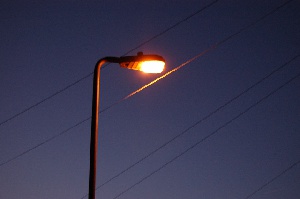 Library Photo:Powered streetlights
Library Photo:Powered streetlights
Even though they are often not on when and where they are most needed, streetlights in the Accra district alone are said to consume some GH¢16million per month -- or GH¢192million per year -- of electricity.
B&FT sources say government is in a frantic search for less costly alternatives; while some of the streetlights are being converted to solar, the government is said to be in discussions with Indian investors for the introduction of LED lights, which are said to consume far less electricity and last longer.
“In fact, the LED lights pay for themselves,” said a source that is close to the discussions.“If for Accra alone we are spendingGH¢16million per month, and then if let’s say we spend GH¢50million in changing all of them to LED lights, the initial cost may be high but within one year we might have paid for whatever was being spent every month. So that instead of consuming GH¢16million per month we will now be consuming about 30% of that.”
The investors, the source said, are prepared to take only 40% of the total cost at the beginning and do the installation, and the rest of the payment will be spread over a five-year period.
“The good news is that in countries where they have done this, after you have paid 40% the rest of the payment is made through savings you have made.”
The LED lights “Consume less electricity and have longer life, a minimum 5 years; some are fifteen, twenty years. The streetlights we have fail after a maximum four or five months --which is why you see them being off all the time. With the LED lights, you do not change them as often as we do the ones currently in use”.
A street-lighting levy charged on electricity bills is supposed to go into keeping the country’s streets illuminated at night.
Consumers have often questioned the rationale of the levy, since most streets go without any or proper illumination all year round.
Power sector managers have argued in return that the levy, which is said to be less than a pesewa (GH¢0.0001) every month, is so small it cannot maintain the lights.
Media reports indicate that the levy was last increased over 20 years ago in 1994, and the ECG is said to make a total of GH¢80,000 from it annually.
Government has long said it is considering increasing the levy to bring it up to a level where it can contribute significantly to maintenance of streetlights, but this is yet to happen.